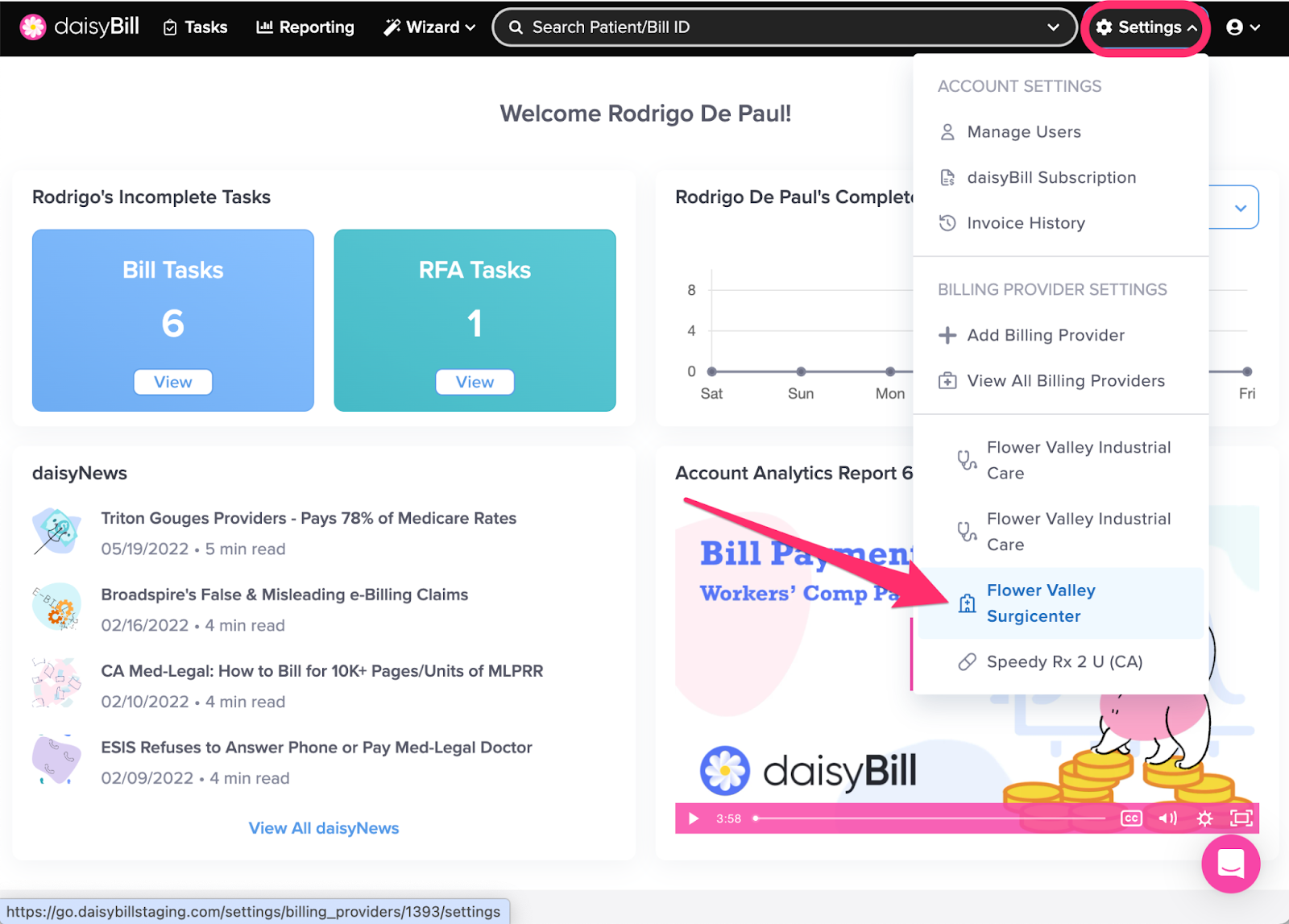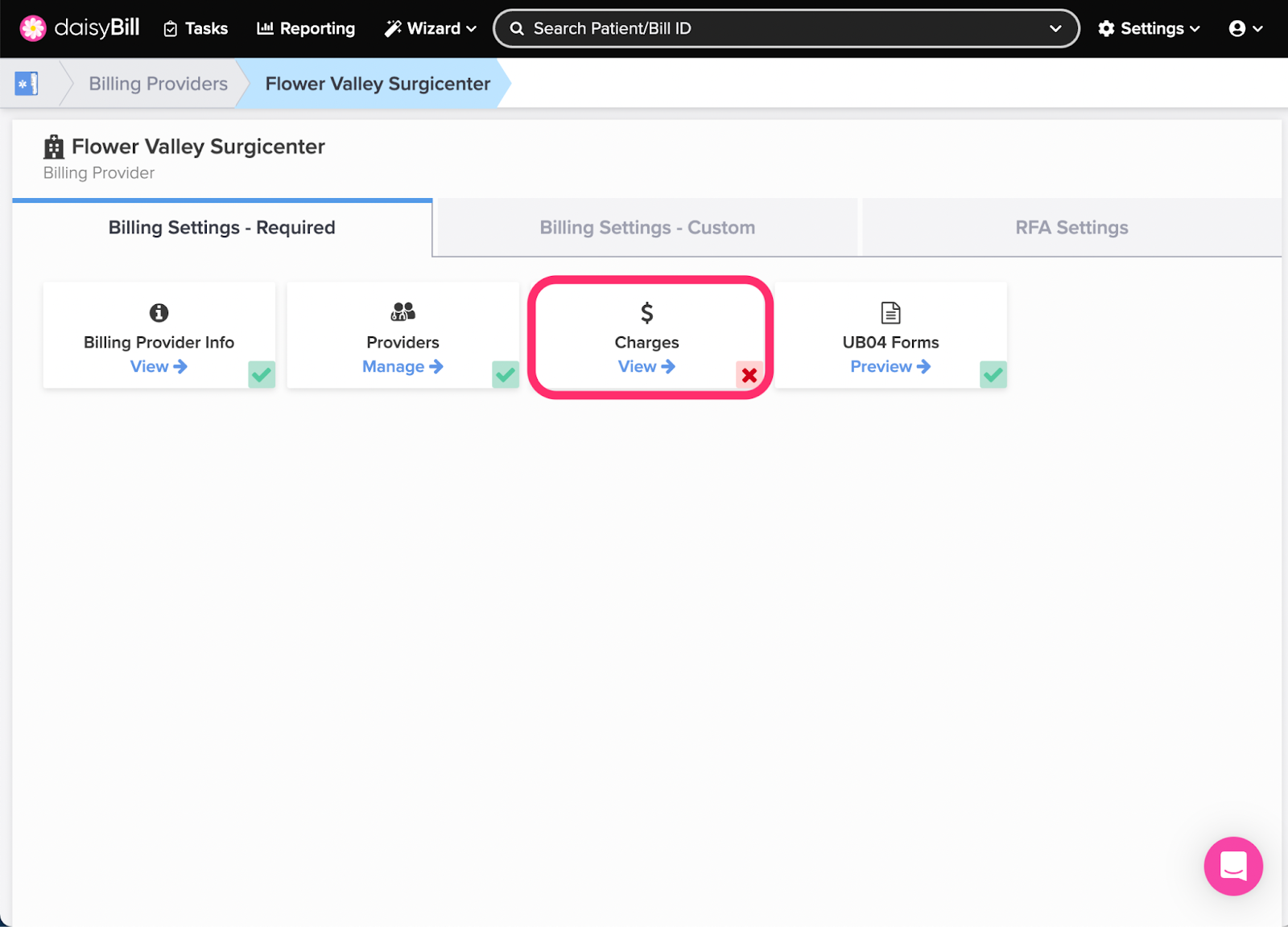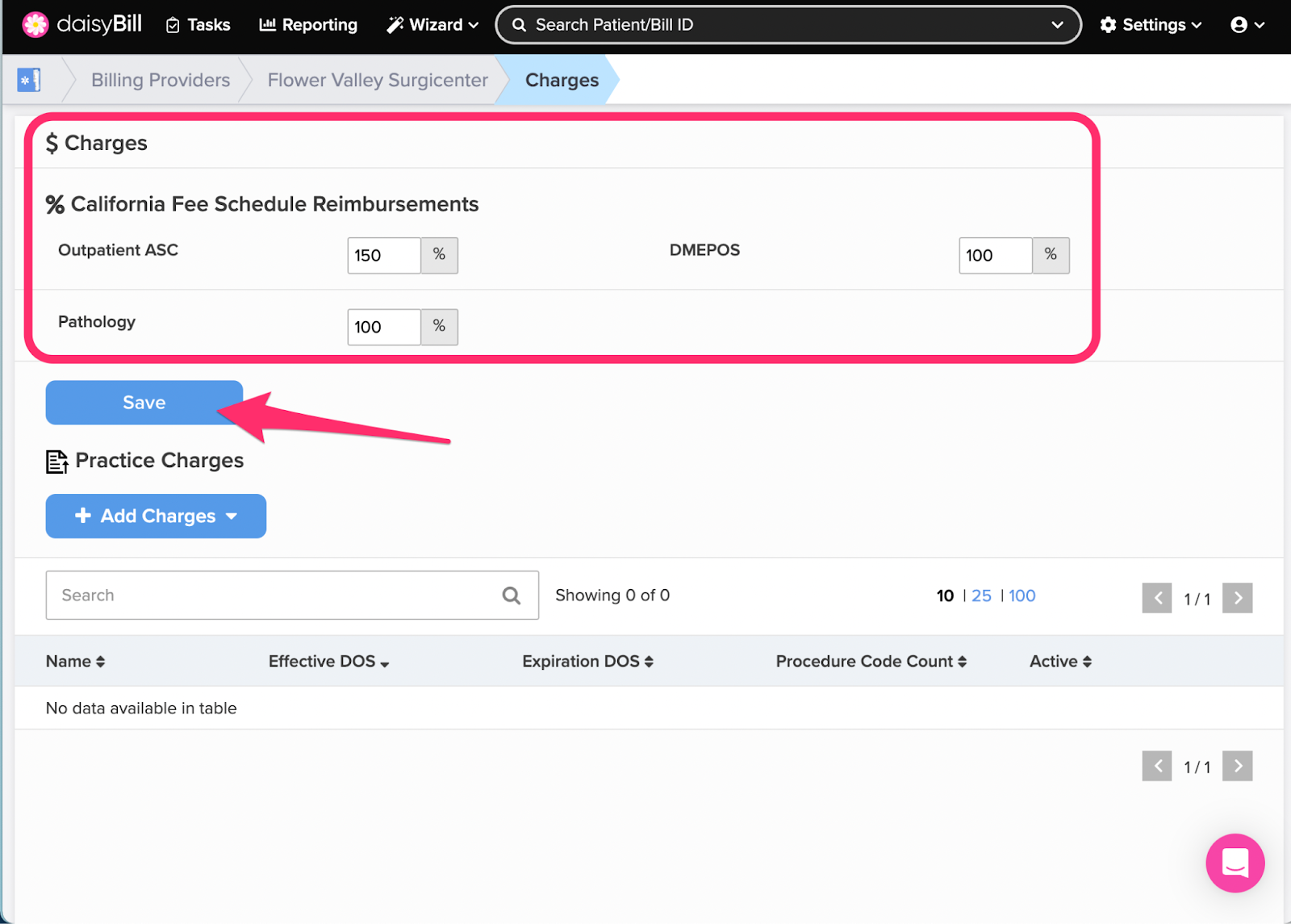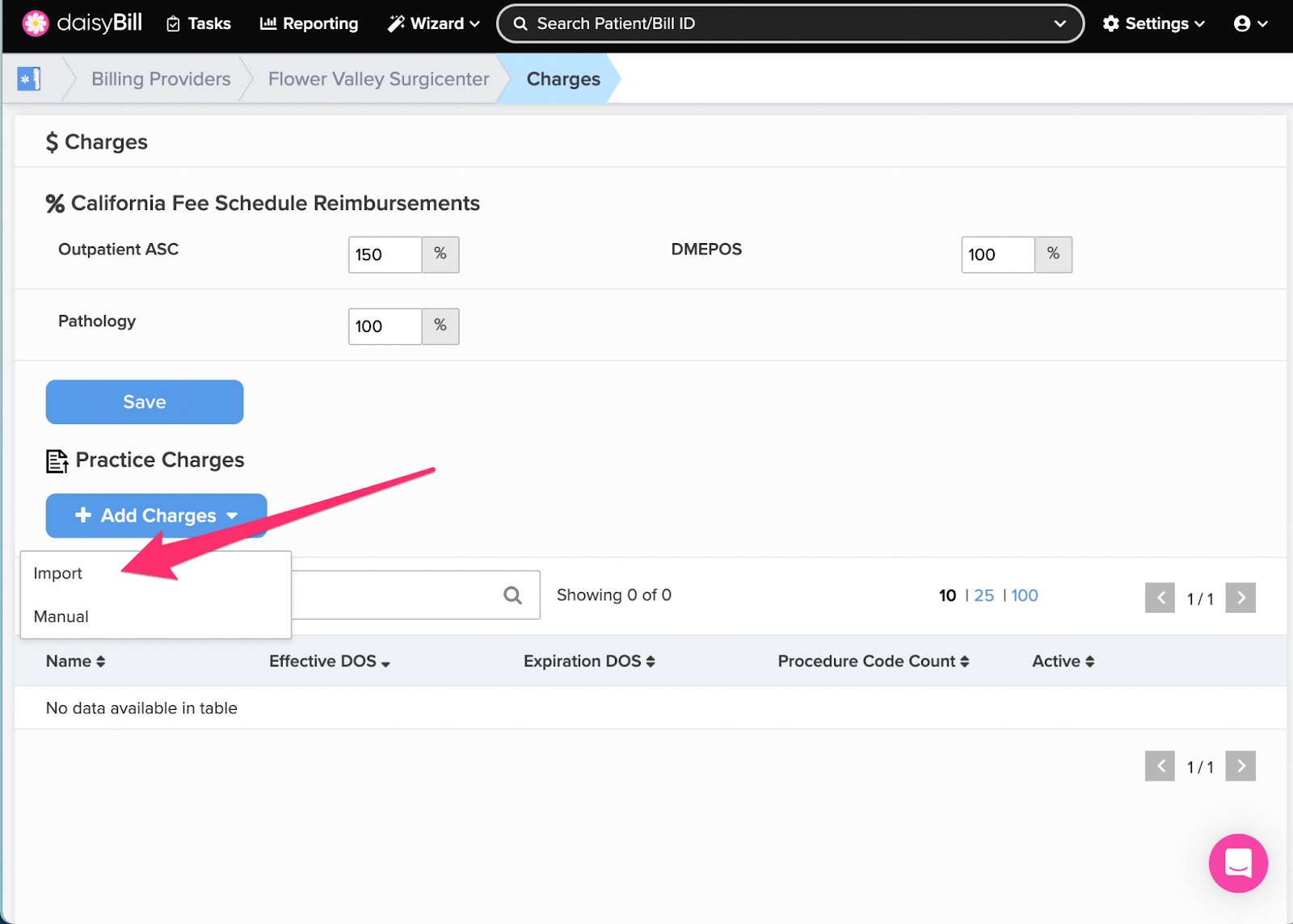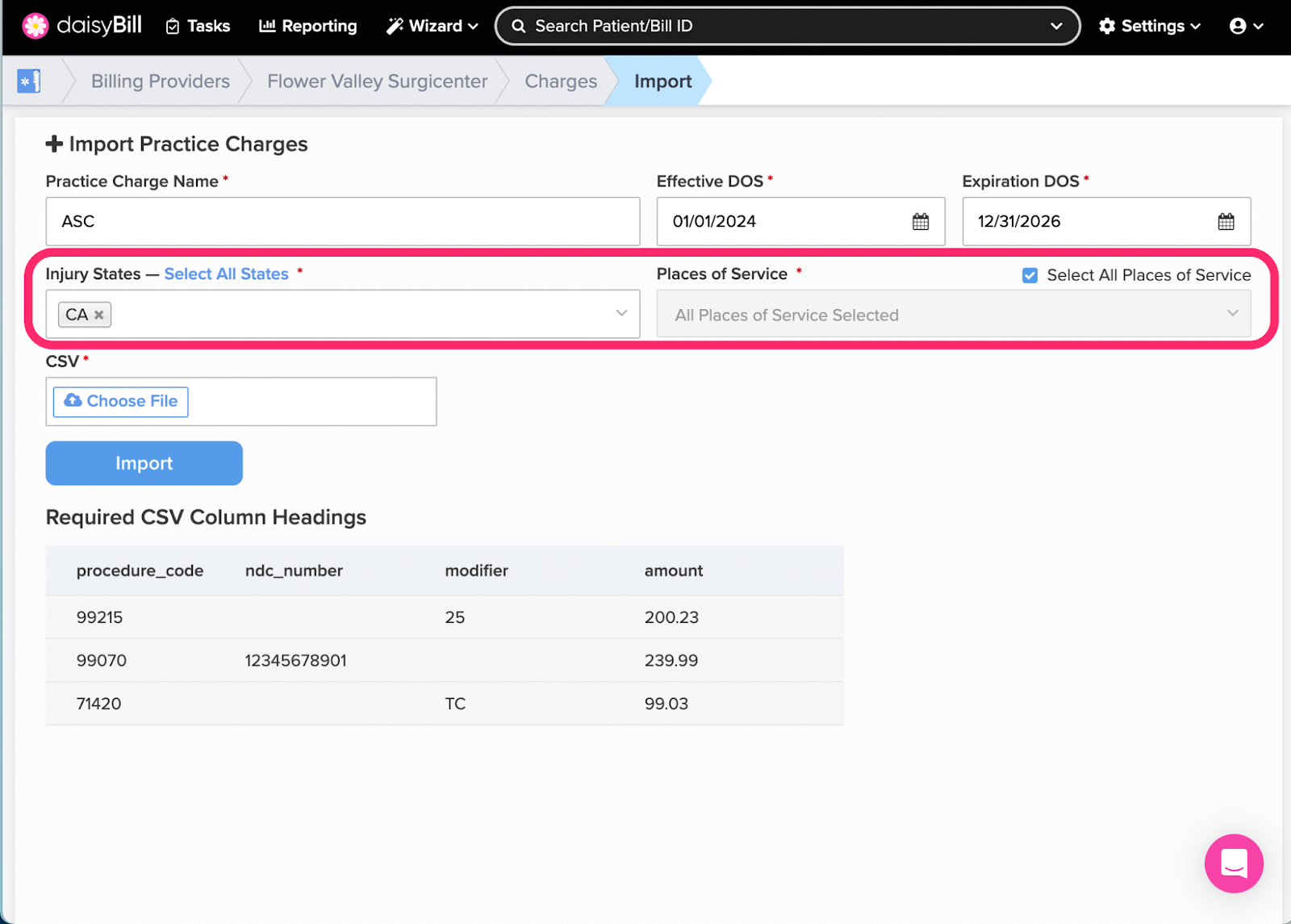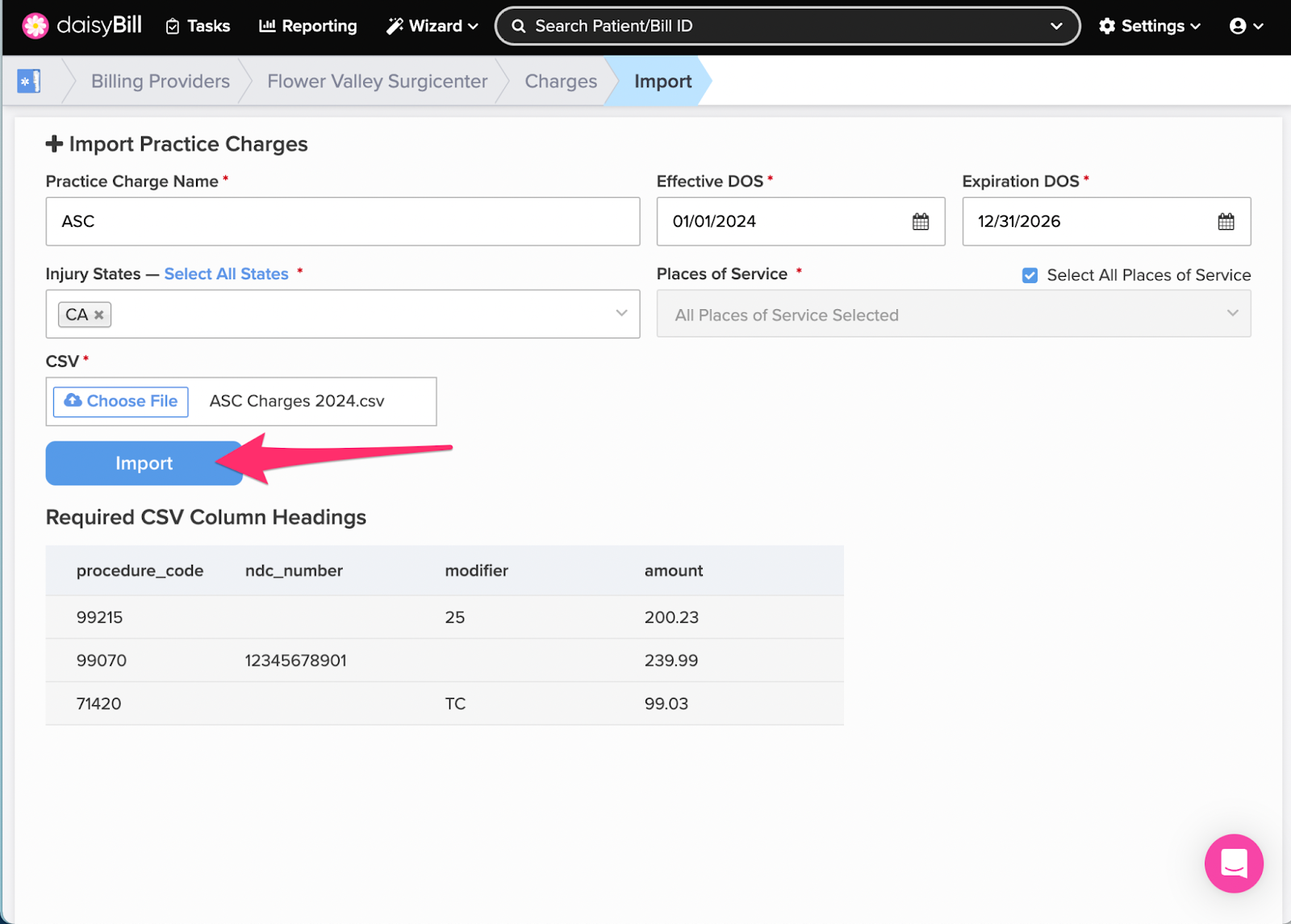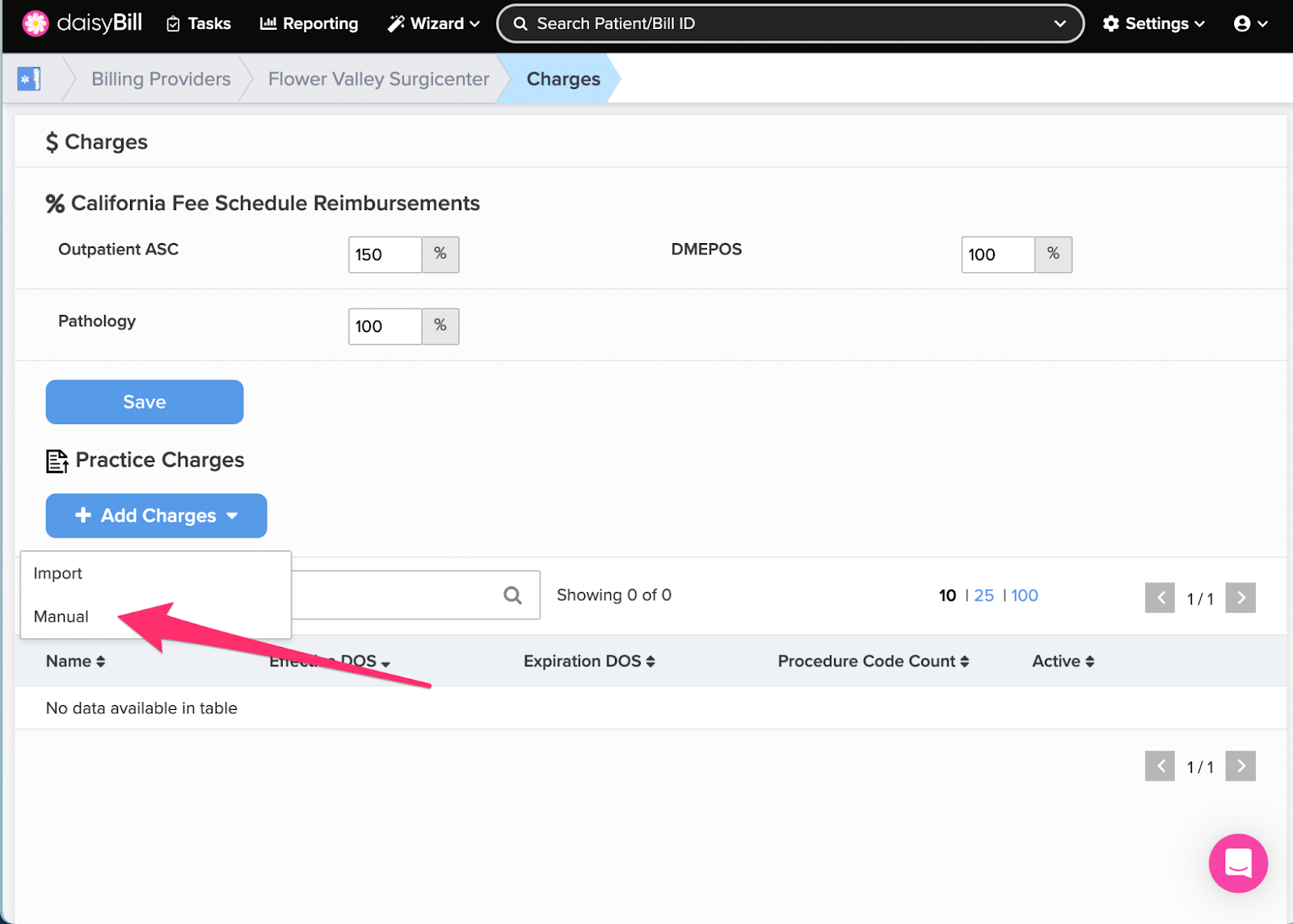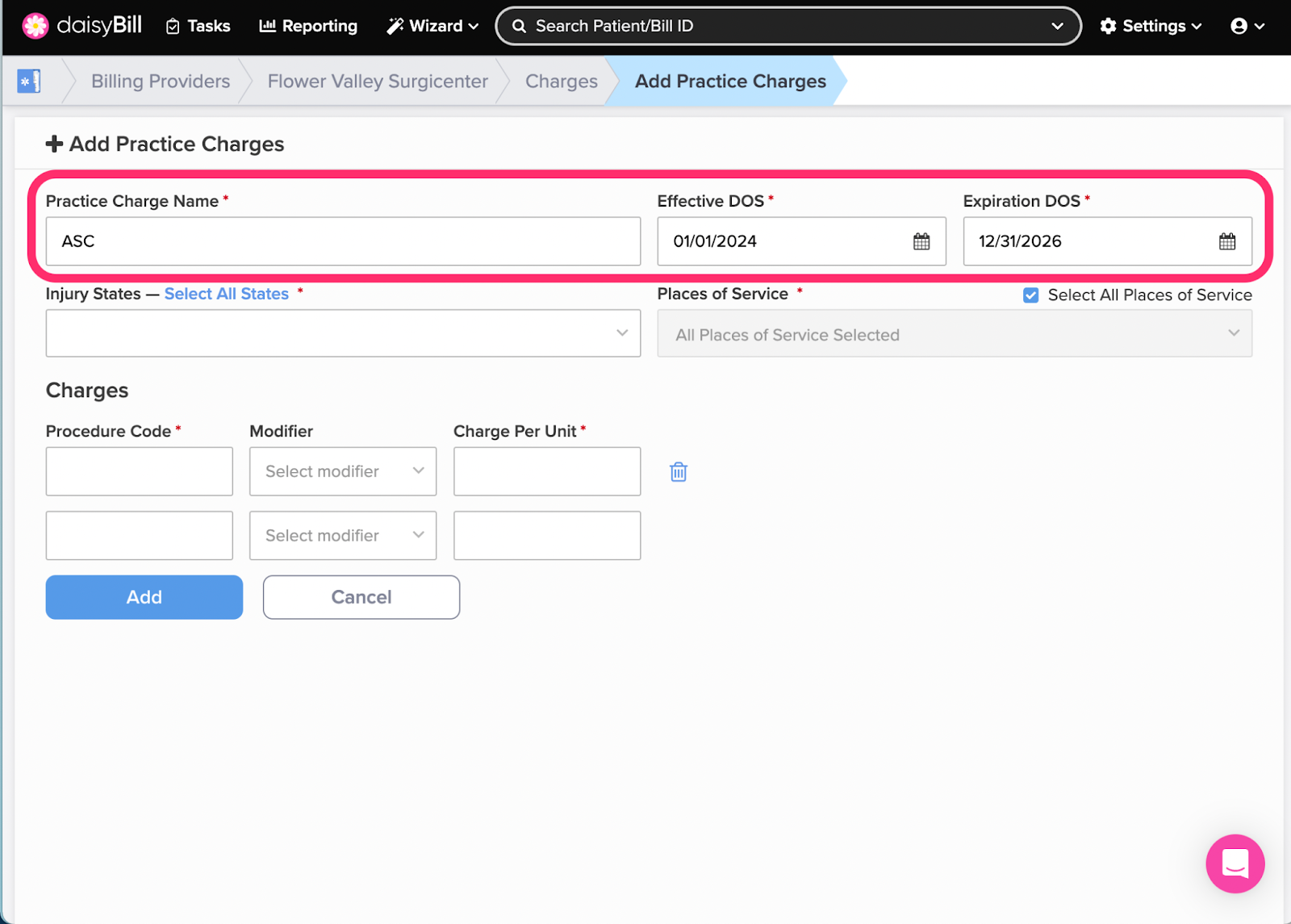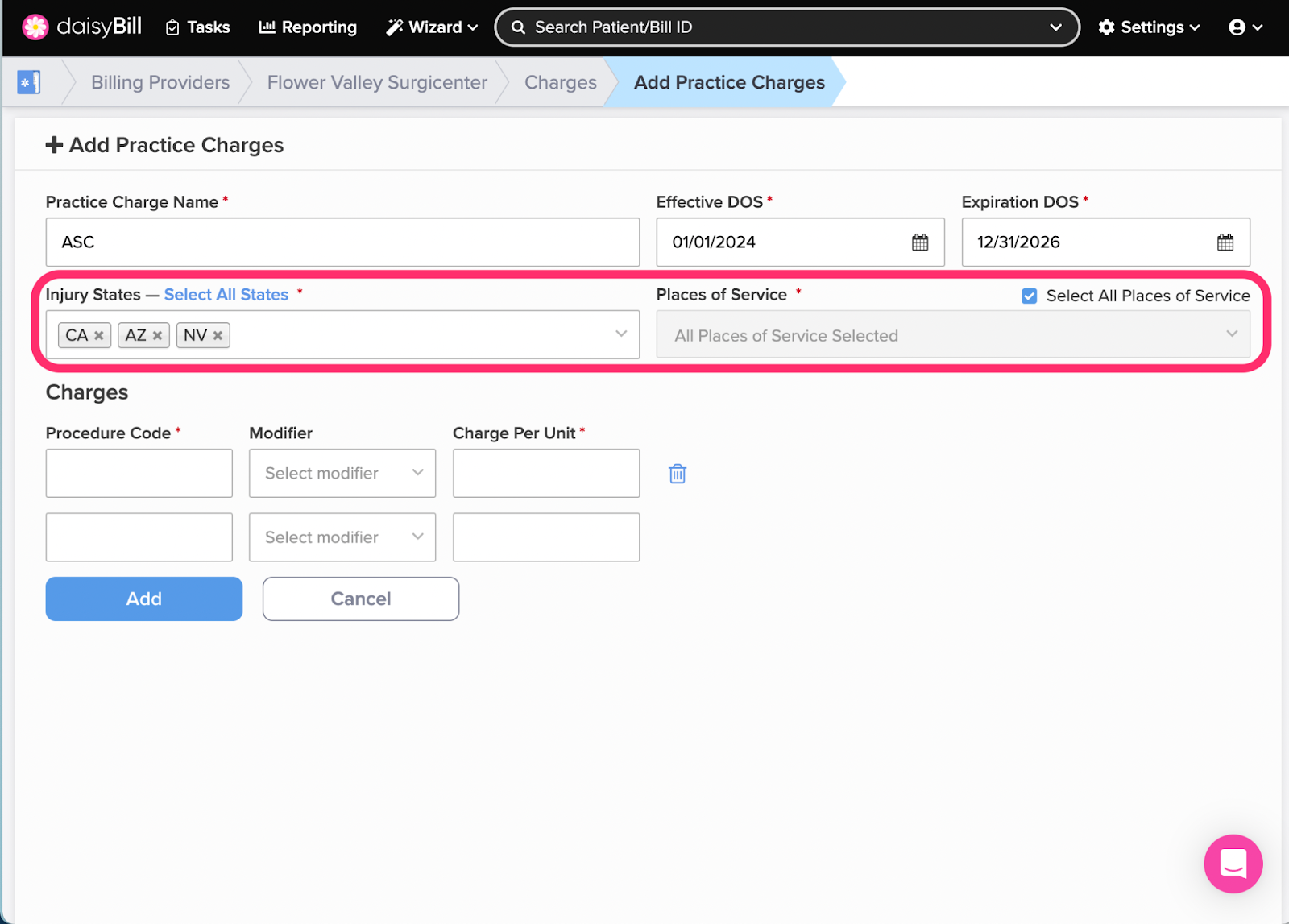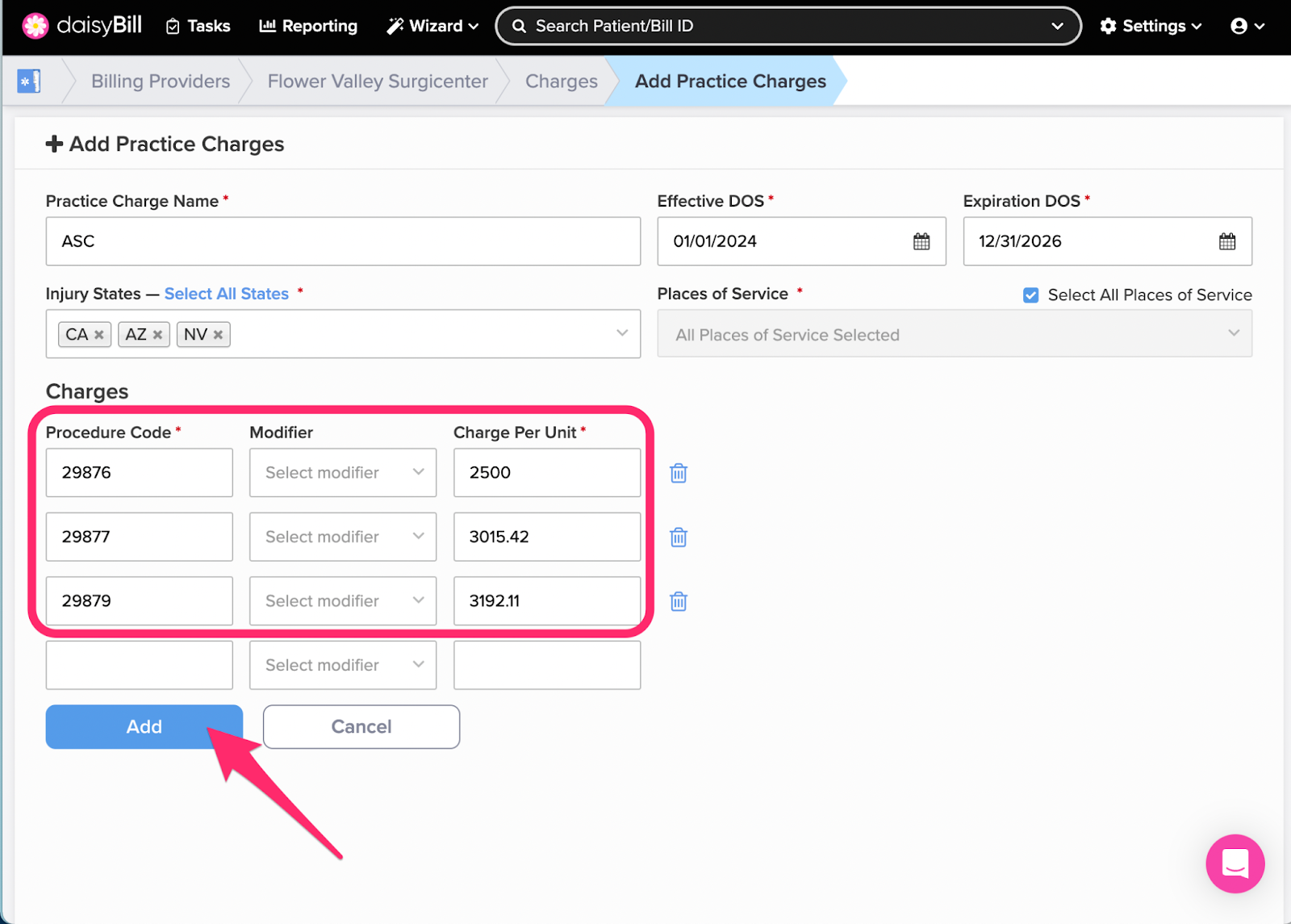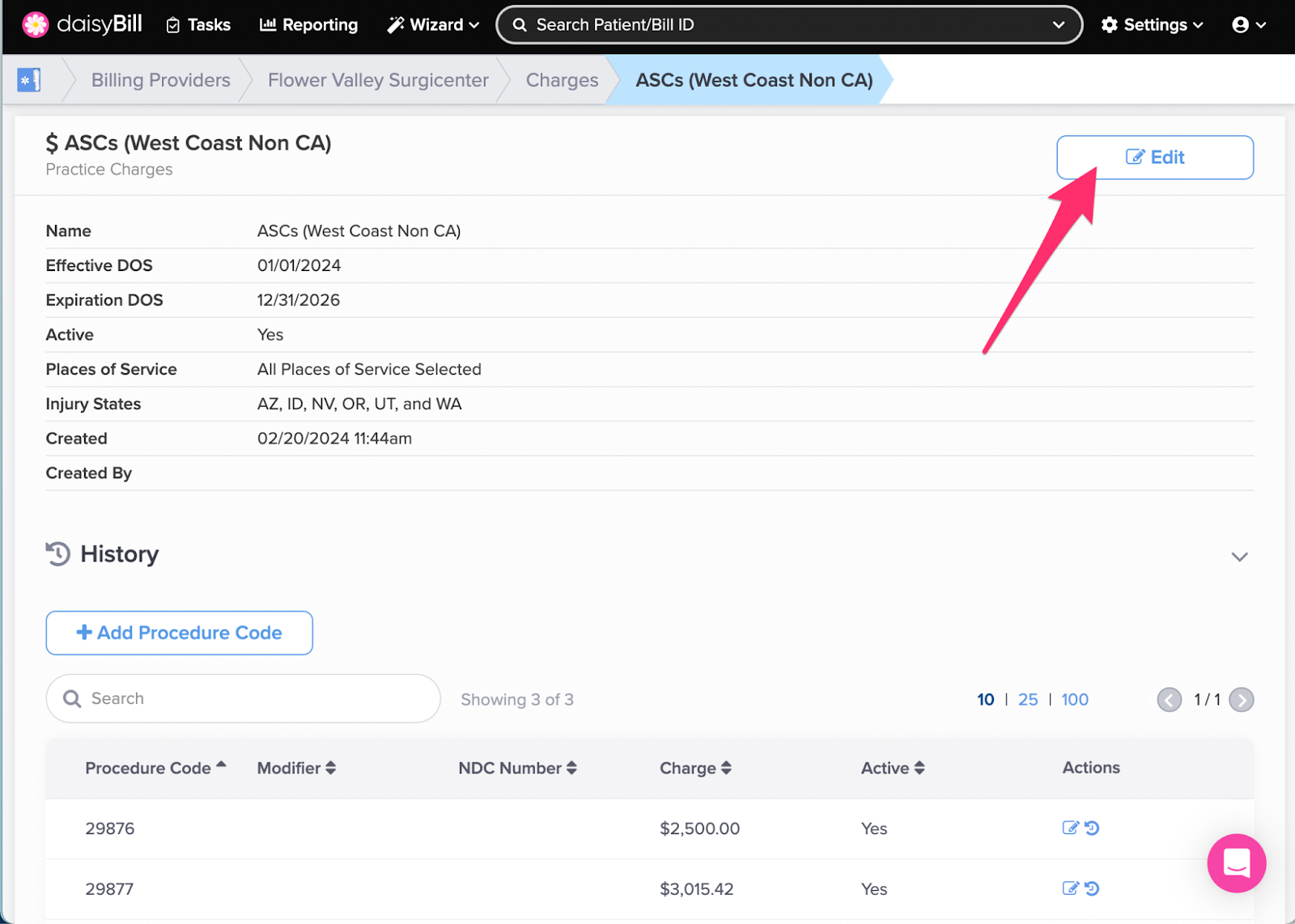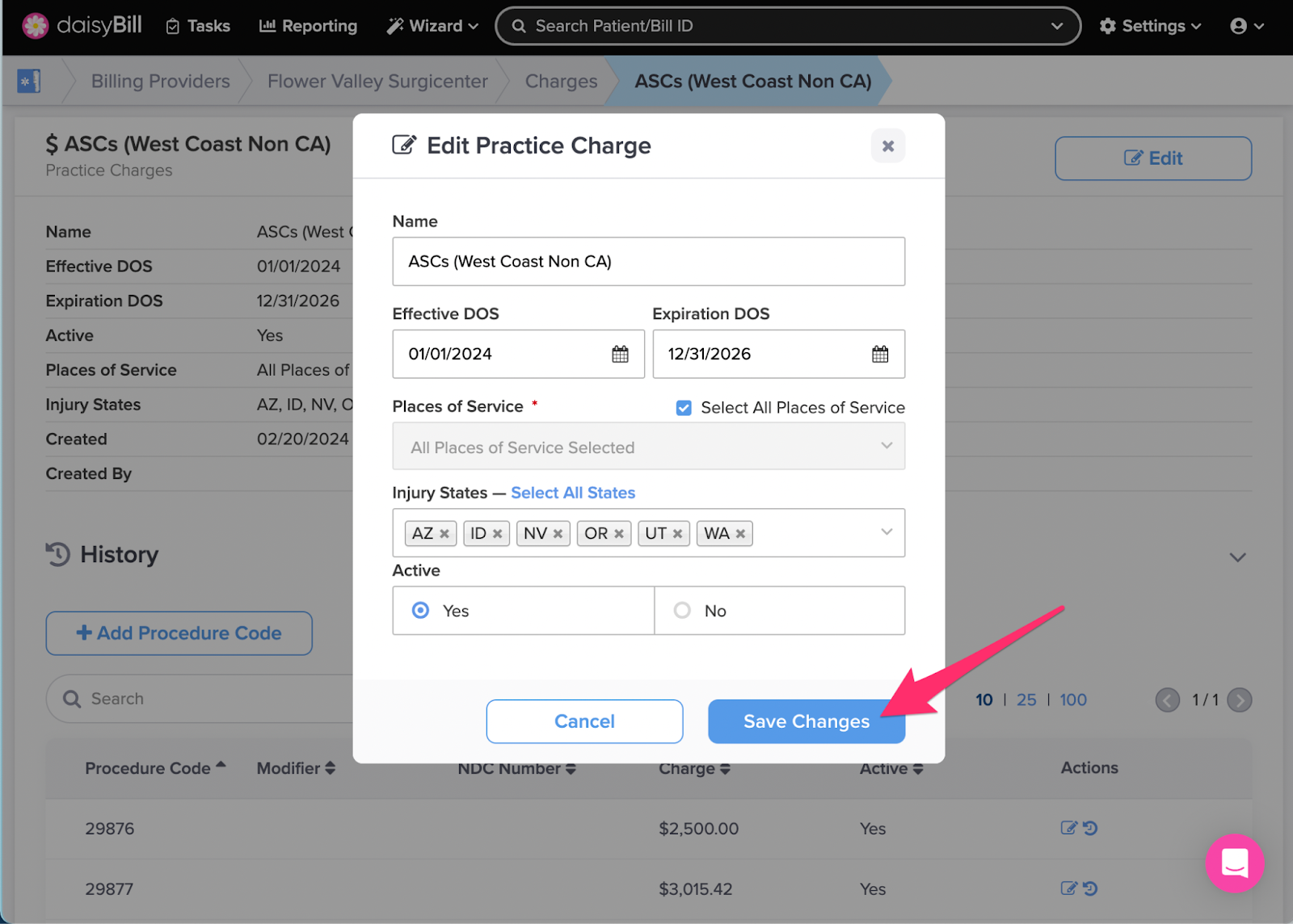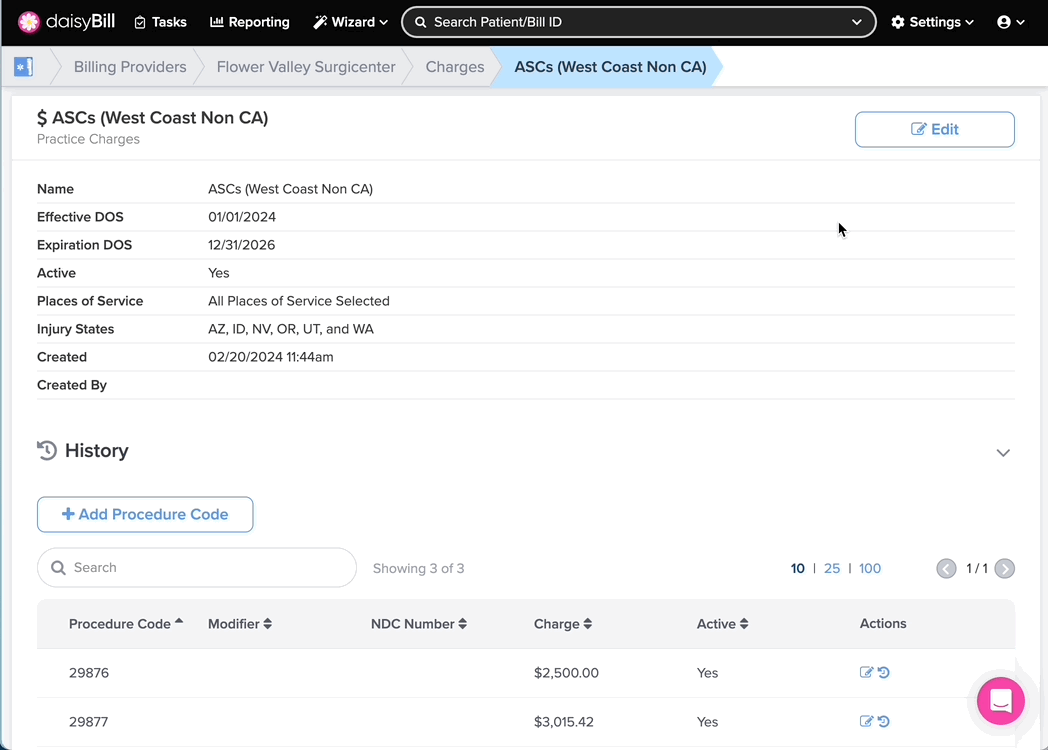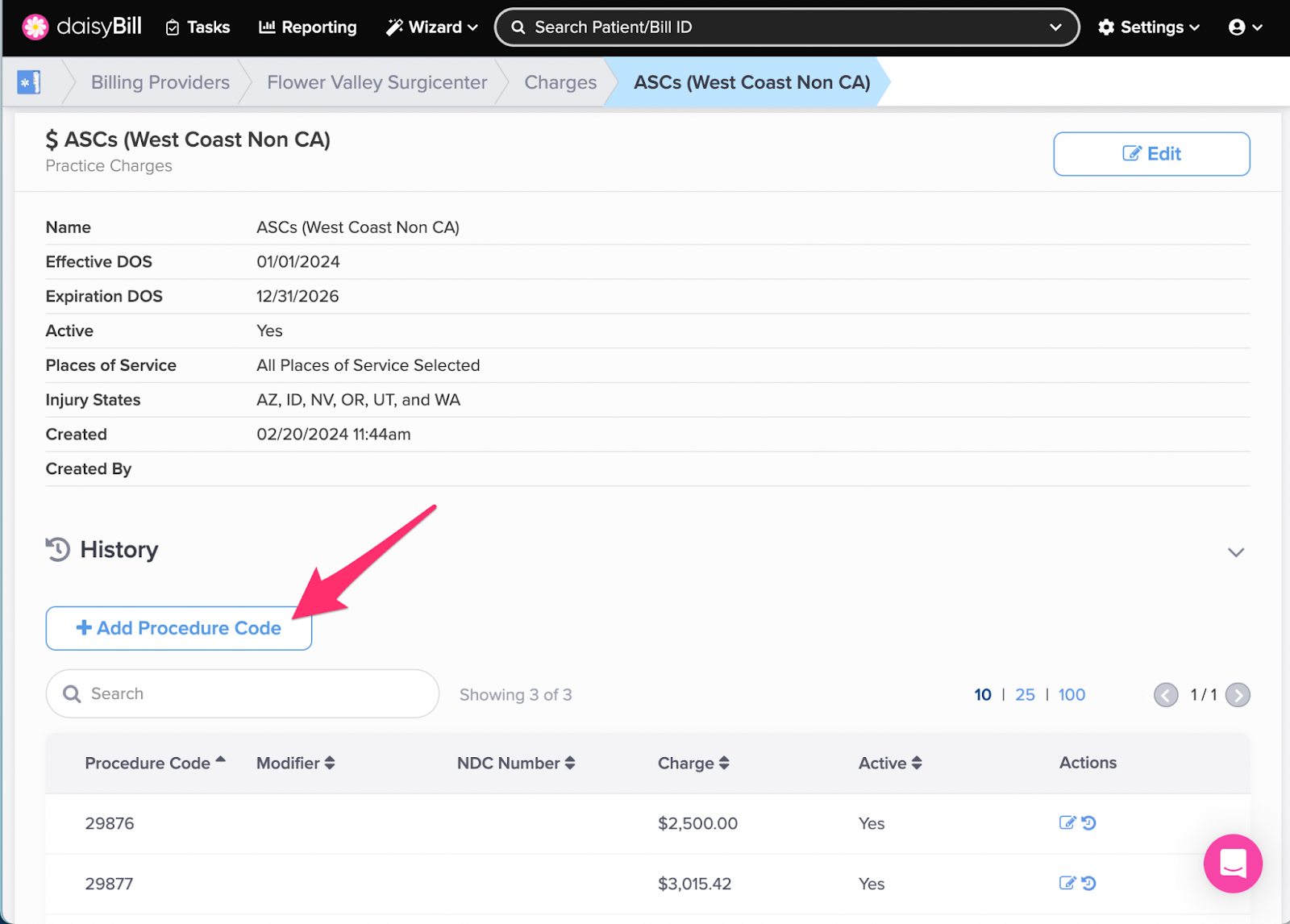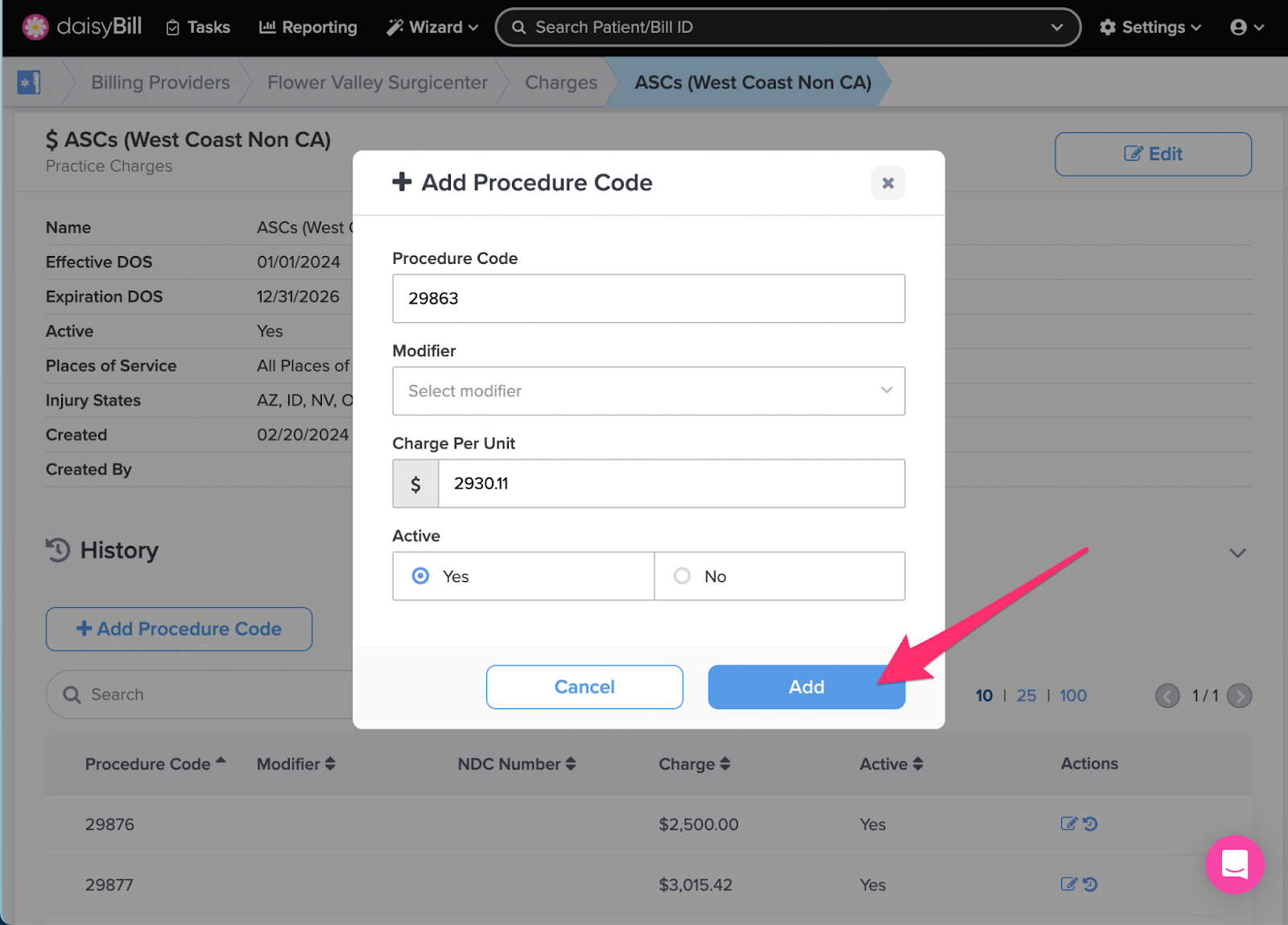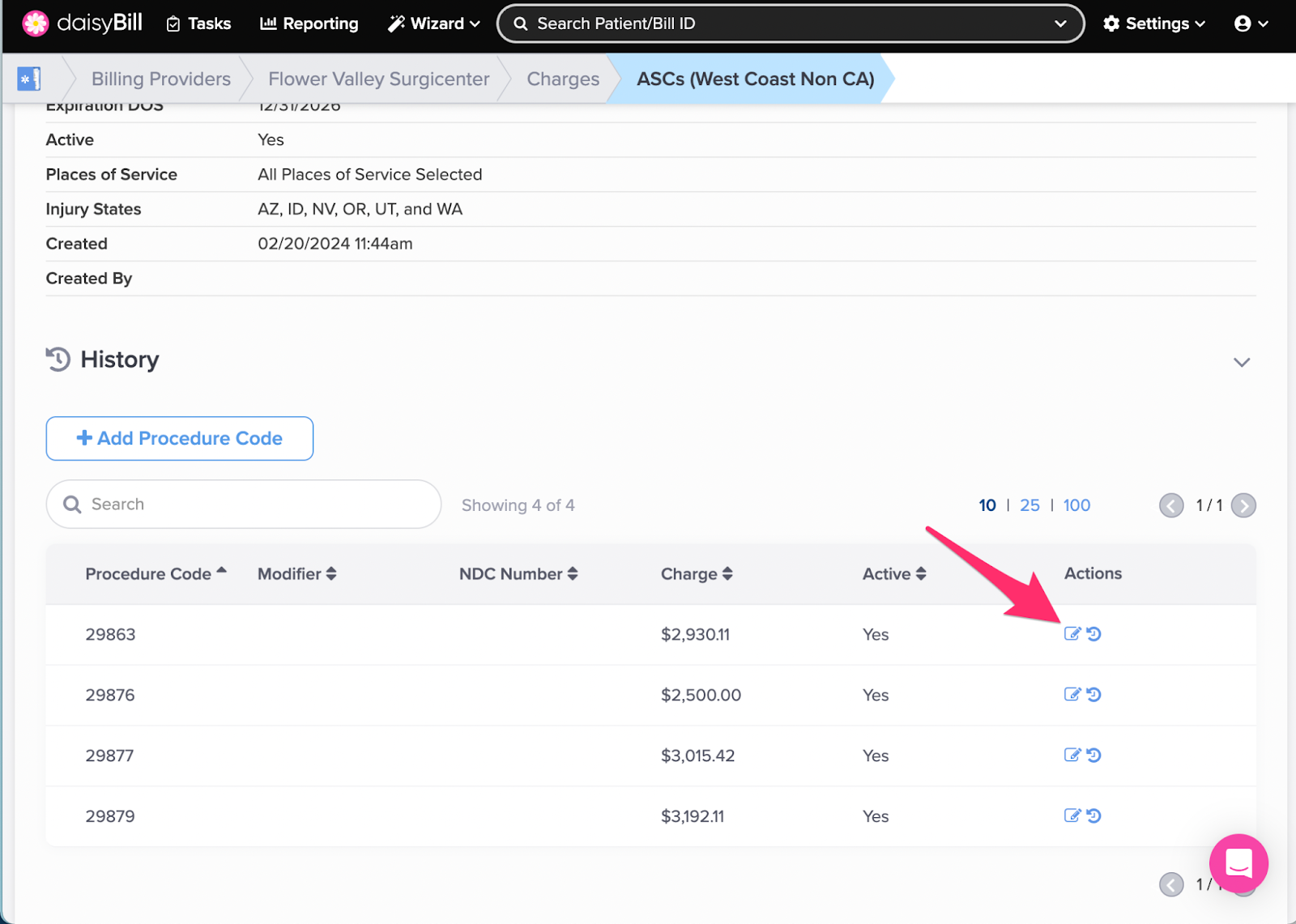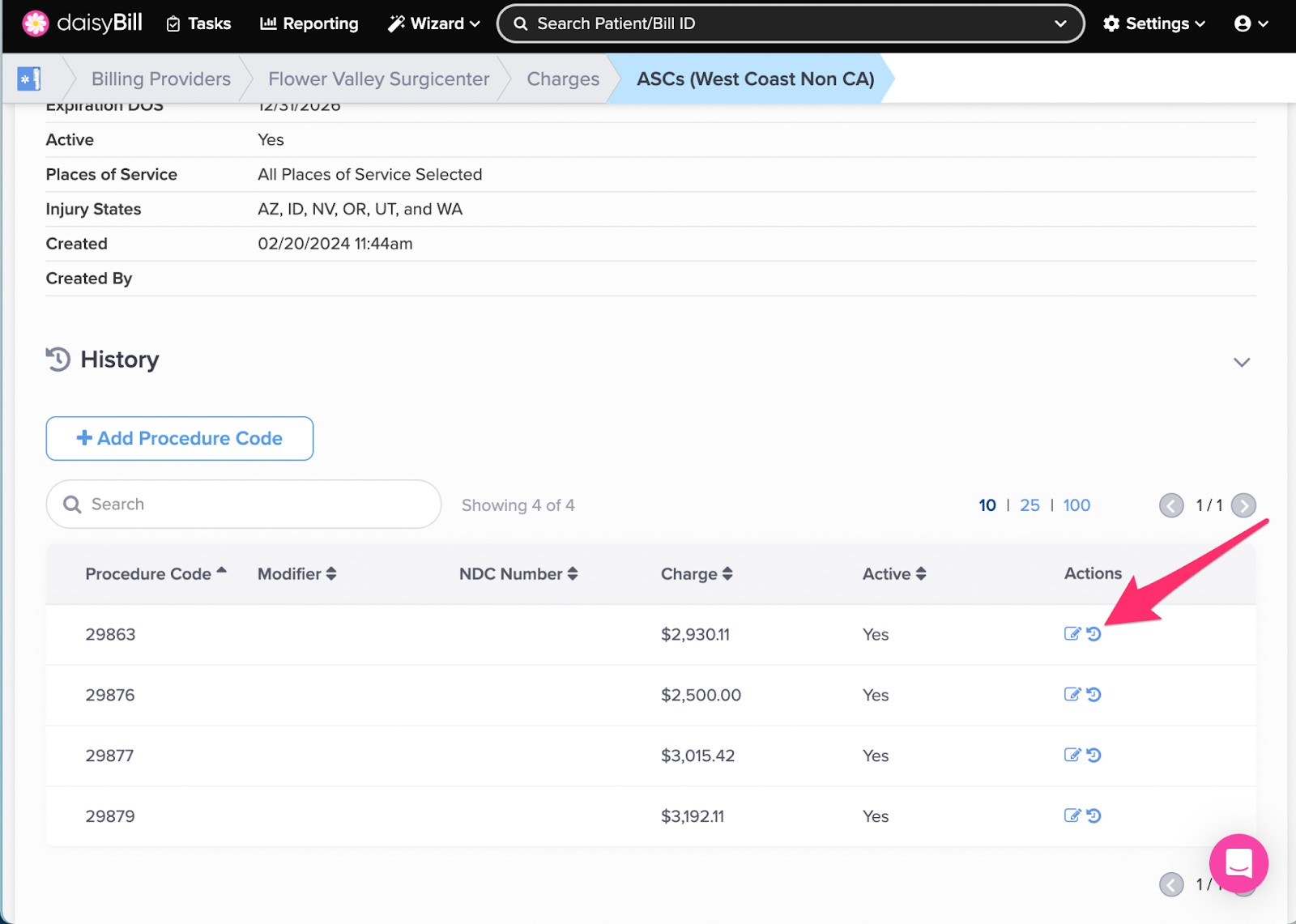In Charges, set the percentage of the state fee schedule (if available), or create your own Charges for all or some of the services you bill.
There are three ways to set your Charges:
- Charges as Percentage of State Fee Schedule (not available for all states)
- Import ‘Custom Charges’
- Manually enter ‘Custom Charges’
Step 1. On the navigation bar, click ‘Settings’, then click the name of the Billing Provider you want to view or edit
This will navigate directly to Billing Settings - Required for that Billing Provider.
Step 2. Click the ‘Charges’ card
A green ‘Checkmark’ icon in the lower right corner of the card indicates Charges have been set for the Billing Provider. A red ‘X’ icon indicates no Charges have been set.
Step 3. Optional (when available): Adjust your ‘Charges’, then click the ‘Save’ button
Set percentages for each type of service you bill. Changes to your Charges are effective as soon as you click the Save button.
If you don’t see this option, it’s because daisyBill is still working on your state’s fee schedule! Follow the steps below to import or create your own Custom Charges.
Note: Charges do NOT apply to Procedure Codes associated with a Custom Charge.
Step 4. To import ‘Custom Charges’ from a spreadsheet, click ‘Add Charges’, then select ‘Import’
Step 5. Enter the ‘Custom Charge Name’, ‘Effective DOS’, and ‘Expiration DOS’
Effective DOS and Expiration DOS correspond to the DOS of the bill where the Custom Charge is applicable.
Step 6. Select the Injury States and Places of Service the charges will apply to
From the Injury States dropdown menu, select the States where the Custom Charge will be effective. Charges will apply to all Places of Service unless indicated otherwise.
Step 7. Click ‘Choose File’ to select your .csv document
Note: The CSV file MUST use the column headings ‘procedure_code’, ‘supplemental_data’, ‘modifier’, and ‘amount’.
Step 7. Click ‘Import’
Step 8. To manually enter ‘Custom Charges’, click ‘Add Charges’, then select ‘Manual’
Step 9. Enter the ‘Custom Charge Name’, ‘Effective DOS’, and ‘Expiration DOS’
Effective DOS and Expiration DOS correspond to the DOS of the bill where the Custom Charge is applicable. Multiple Custom Charges can be created with the same Effective and Expiration dates.
Step 10. Select Injury States and ‘Places of Service’,
From the Injury States dropdown menu, select the States where the Custom Charge will be effective.
Step 11. Enter the ‘Procedure Code’, ‘Modifier’ (if applicable), and ‘Charge Per Unit’, then click ‘Add’
A single Procedure Code (or Procedure Code and Modifier/Supplemental Data combination) can only exist on one Effective Custom Charge at a time.
Step 12. To view a ‘Custom Charge’, click its name
Step 13. To edit a ‘Custom Charge’, click ‘Edit’
Step 14. Enter the changes, then click ‘Save Changes’
To disable a Custom Charge, select No under Active. The entire Custom Charge will no longer be used.
Step 15. To view the Custom Charges History, click ‘History’
History displays the complete history of the creation and edits to the Custom Charges.
Step 16. To add a ‘Procedure Code’, click ‘Add Procedure Code’
Step 17. Enter the procedure code information, then click ‘Add’
Step 18. To edit a ‘Procedure Code’, click the ‘Pencil’ icon
You can edit the Charge Per Unit, or deactivate the Procedure Code from your Charges.
Step 19. To view the changes made to a ‘Procedure Code’, click the ‘History’ icon
That was easy, wasn’t it?
